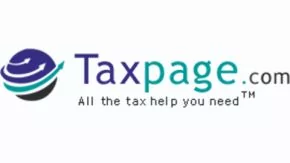As an owner-manager of a corporation you can compensate yourself by way of salary, dividends, management fees or by a shareholder loan. Though, generally, any distribution from your company is subject to taxation, each type of distribution has different tax implications and needs to be properly documented.
However, the use of shareholder loans has important tax saving implications in certain circumstances. The general rule is that if a withdrawal from a corporation, designated as a shareholder loan, is repaid within one year from the end of the taxation year of the corporation, that is the taxation year in which the loan was made, it will not be included in the income of the borrower. So, for example, if the year-end for the corporation is December 31, 2011 and you borrowed from the corporation in June of 2011 you have until December 31, 2012 to repay the loan.
If the loan recipient fails to repay the loan within the one year after the year-end, the full value of the loan is included in the income of the recipient back to the date of advance under subsection 15(2) of the Income Tax Act. This is to prevent the abuse of shareholders loans; without this rule a taxpayer could repeatedly withdraw amounts as loans from his or her corporation without paying any tax on the transactions.
If you run afoul of the one-year after the year-end rule and as a result the loan amount is included in income you can repay the loan at a later date and then deduct the amount of the repayment from your income in the year it is made under paragraph 20(1)(j) of the Income Tax Act. This presents certain tax deferral and income-splitting opportunities.
For instance, you could provide a shareholder loan from your corporation to a family member with low-income, eg. a daughter in university. The daughter receives the loan at the prescribed rate (the rate in 2011 was 1%), which is included in her income if not repaid under the one-year-rule after the year-end. She can then deduct the amount of the loan from her income in the year the loan is repaid. She may want to wait until her income is higher to repay in order to maximize the effect of the deduction. However, your child has to be 18 or older otherwise the punitive “kiddie tax” will work to tax the loan at the highest marginal rate. Please note, interest has to be paid on the loan. Unpaid interest will be deemed by Canada Revenue Agency to be a benefit to the loan recipient and will be added to her income.
There are exceptions to the one-year-rule. For instance, if the loan is made to a shareholder-employee as an employee or employee’s spouse or common-law partner, not as a shareholder, and is used to purchase a principal residence if the corporation is in the business of lending money; if the loan is used to purchase a vehicle for business purposes, or if the loan is used by an employee to purchase previously unissued shares from the lender or related corporation.
Importantly, any loan from the corporation must be documented in the appropriate manner, for instance by a director’s resolution. It also must be a part of a “bona-fide arrangement” in that it must exhibit the characteristics of a loan made between non-arm’s length parties. Ultimately, establishing an adequate paper trail is essential if you or the corporation is audited by the Canada Revenue Agency and there is any doubt on the nature of the withdrawal.
Withdrawals from corporations present complex tax considerations and should not be done without professional experience or advice. If you are considering borrowing money from your corporation you should consult our experienced tax lawyers to advise on the potential pitfalls and opportunities.

